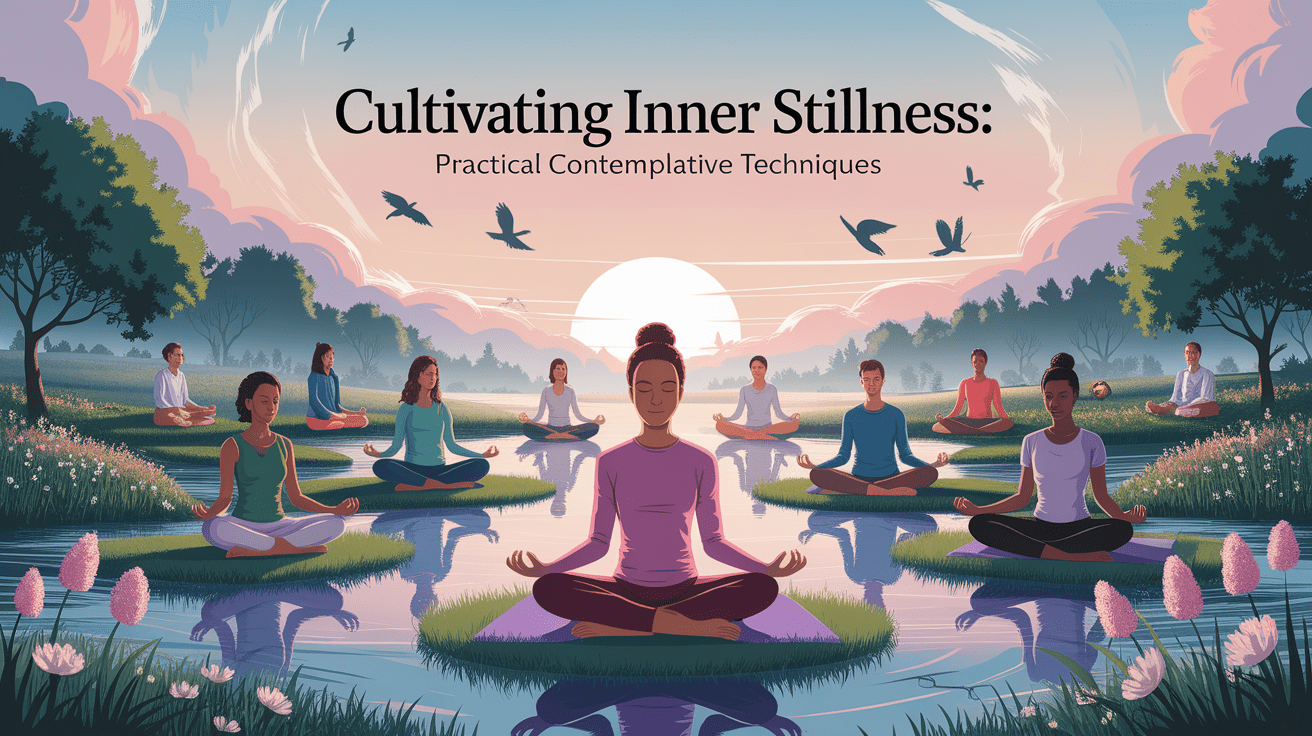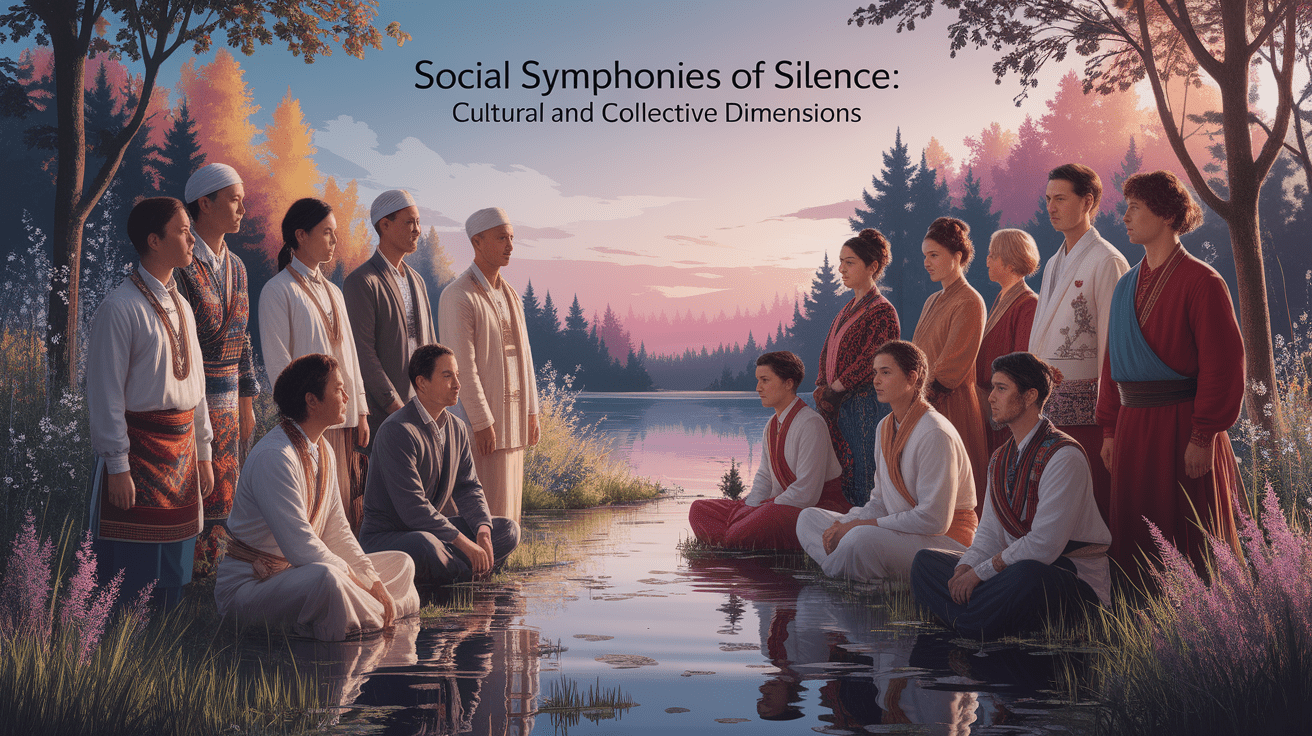Still Waters Within: The Psychology of Silence and Contemplation
Opening the Door to Stillness: Unpacking Silence’s Psychological Power
Silence, often associated with solitude and peaceful contemplation, reflects more than the mere absence of sound—it is a psychological and experiential state that can foster deeper levels of self-awareness, mental clarity, and emotional regulation. In the realm of contemplative psychology and neuroscience, silence is increasingly seen as a pathway to unique mental states, such as minimal phenomenal experience and non-dual awareness, where the mind’s usually active inner dialogue begins to quiet.

From a psychological perspective, voluntary immersion in silence can offer notable mental health benefits. It invites opportunities for reflective thinking and encourages mindful awareness, aligning with contemplative traditions that regard stillness as an essential ingredient of self-reflection and psychological healing. However, the effects of silence can vary—when embraced willingly, it can promote mental restoration, but if experienced as isolation or enforced absence of communication, it may evoke discomfort or resistance.
The Neuroscience of Quiet: How Silence Shapes Consciousness
Neuroscientific research has begun to examine how silence alters brain activity and shapes consciousness. Studies have noted that through intentional silence, often facilitated by meditation or sensory reduction, individuals can achieve states of silent consciousness where both external stimuli and internal mental chatter are diminished. This aligns with the Sphere Model of Consciousness, which conceptualizes self-awareness as a dynamic interplay between conscious presence and mental content.

Silence may influence neural processing by reducing sensory inputs, creating conditions for heightened introspection and mindful awareness. This can enhance cognitive functions such as focus, emotional regulation, and reflective consciousness. According to emerging perspectives, these states are not simply restful pauses; they may represent optimal conditions for rebalancing mental energy and fostering profound insights.
Cultivating Inner Stillness: Practical Contemplative Techniques
Integrating silence into daily practice can yield profound psychological benefits, particularly when framed by contemplative traditions. Common techniques include:

- Silent Meditation: Sitting in stillness while focusing on the breath or bodily sensations can induce a quiet mind and improve emotional regulation.
- Mindful Walking: Moving through a space with deliberate attention to each step fosters peaceful contemplation and disrupts habitual overthinking.
- Reflective Journaling: Recording one’s inner dialogue after periods of silence deepens self-awareness and promotes clarity.
- Solitude Retreats: Extended time in a quiet, distraction-free environment encourages mental restoration and inner peace.
These contemplative practices are grounded in psychological and neuroscientific research showing that mindful awareness can support mental health by reducing stress and improving overall well-being.
Compassionate Quiet: Silence in Therapeutic Encounters
In mental health care, silence can serve as a powerful therapeutic tool. The concept of compassionate silence goes beyond the absence of speech; it reflects a clinician’s mindful presence, deep listening, and nonjudgmental awareness. This quality of silence supports psychological healing by creating an atmosphere where clients feel heard and understood without the pressure of immediate verbal response.

Therapeutic silence aids in:
- Encouraging clients to access deeper feelings and insights during sessions.
- Fostering trust and safety in the therapeutic relationship.
- Providing space for reflective practice and emotional processing.
Rooted in contemplative mindfulness, compassionate silence is as much about the clinician’s internal state of clarity and focus as it is about maintaining external quiet.
Social Symphonies of Silence: Cultural and Collective Dimensions
Silence is also a social and cultural phenomenon, carrying different meanings in diverse contexts. In some cultures, shared silence during gatherings symbolizes respect, unity, or mutual understanding. In other contexts, it may function as a form of resistance or solidarity. According to social psychology research, silence can express group identity, collective contemplation, or even unspoken agreement.

On an individual level, silence often supports introspection, mental clarity, and spiritual connection. Importantly, the impact of a shared quiet space depends on cultural norms—what signifies mindfulness and connection in one culture might evoke discomfort or alienation in another.
Echoes of Stillness: Integrating Silence into Daily Life
Modern lifestyles often present a continuum of noise—both auditory and cognitive—that can erode opportunities for inner stillness. Yet, research highlights numerous psychological benefits of silence, including enhanced creativity, better emotional regulation, and improved focus. Deliberately creating silent moments throughout the day can help counterbalance overstimulation and support mental restoration.
Effective strategies for integrating silence into daily routines include:
- Starting the day with five minutes of meditative silence to set a mindful tone.
- Scheduling short silent pauses during work to reset attention.
- Incorporating silent reflection into evening rituals to promote relaxation and sleep quality.
The key is intentionality—engaging with silence as a conscious practice rather than viewing it merely as the absence of activity. Over time, such integration can lead to a more grounded, self-aware, and resilient mind.







